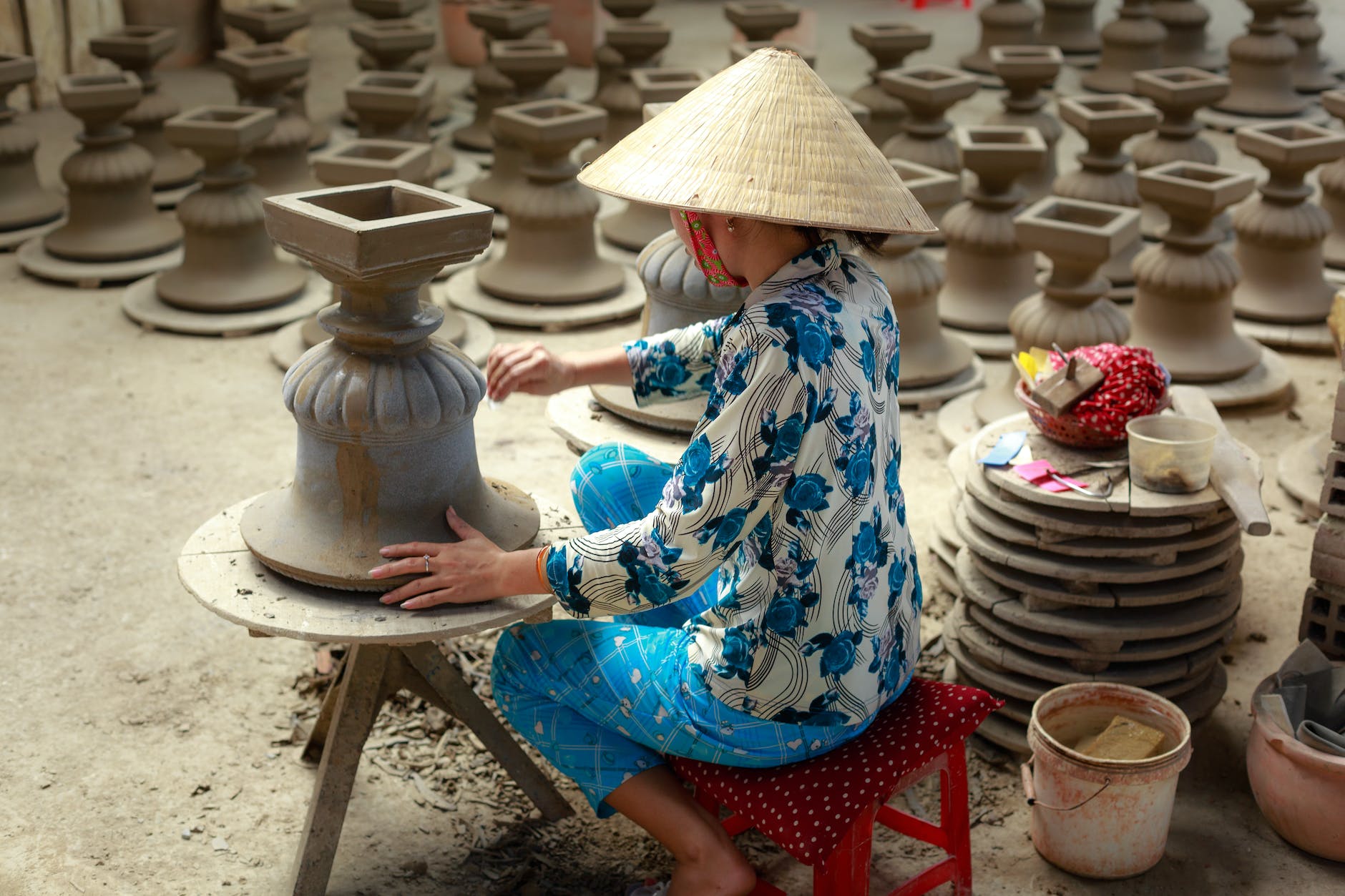The Cultural Imprint of Clay: Connecting Pottery Across Eras and Civilizations
Since prehistoric times, the development of pottery traditions worldwide paralleled progression of human civilization itself. Analyzing ceramic artifacts and styles provides unmatched insight into cultures by tangibly documenting evolving lifestyles, innovations, trade, migration, and belief systems in a way sometimes absent from surviving texts. The imprints left in clay trace the intricate story of humankind.
Functional Origins Meeting Survival Needs
The earliest known pottery vessels dating back 20,000 years in East Asia provided breakthrough advantages for nomadic hunter-gatherers. Clay pots enabled cooking with fire and securely storing foraged food and water. Essential boiling, simmering, and storage capacities transformed lifestyles and survival odds.
These primordial functional vessels set ongoing improvement of potting techniques in motion to meet demand. Utilitarian pottery laid civilization’s cornerstone.
Developing Distinctive Regional Aesthetics
As methods advanced over generations, diverse cultural styles emerged tailored to local resources and values. Silk route Iranian lusterware displayed ornate geometry and opulent ruby shimmer. Organic pre-Columbian vessels featured stylized animal motifs. Traditional Japanese raku pottery radiates zen tranquility through rustic imperfections. Regional identities conveyed themselves through clay.
Beyond pure utility, unique pottery aesthetics provided early social distinction and prestige. Owning culturally-representative pieces demonstrated connoisseurship.
Tracing Trade and Cultural Diffusion
The global distribution of various ceramic types traces early interconnectivity. Chinese celadon glaze’s spectral qualities found acclaim across East Asia. Mediterranean amphora designs spread with wine exports. As people traveled, aesthetic influences diffused gradually.
Archeological excavations amplify history’s abstract narratives by unearthing tangible artefactual proof of otherwise ephemeral distant links. Shards make ancient trade tangible.
Evolving Uses Reflecting Societal Shifts
New pottery applications arose in tandem with societal innovations. Bronze and Iron Age burial urn styles indicate evolving religious views. Industrial tableware patterns met urban needs of emerging middle classes. Electrified insulators enabled modernization, underwater pipes advancement.
Ceramics both responded to and facilitated major lifestyle shifts as societies progressed. More than inert objects, pottery shaped momentum.
Signaling Social Values and Hierarchies
Lavish ornamented ceramics frequently denoted high social stratification with plainer utilitarian wares for common folk. sumptuous Moche portrait pottery presented elites while funerary terracotta soldiers evidenced Chinese emperor god-status. Even today, handpainted porcelain signals luxury.
Conspicuous use of fine ceramic wares consistently conferred privilege across disparate cultures. Material disparities reinforced class divides.
Conveying Cultural Ideals and Beliefs
All civilizations imprinted pottery with sanctified motifs and narratives representing accepted cosmology. Greek vessels bore decorative gods and mythical beasts while Islamic tiles prohibited human figures. Traditional fables and precepts took ceramic form to reinforce cultural mores.
Values held sacrosanct manifested in clay, physically transmitting principles through generations to reinforce social order. Pottery codified cultural programming.
A Continuous Creative Heritage
Despite massive social change over millennia, pottery retains its flexible relevance while providing tangible creative continuity between eras. The palette simply expanded, encompassing 5,000 year old amphorae alongside postmodern glazed commentary simultaneously. This bridging across immense spans of time through humble utility and artistry represents clay’s humble yet enduring gift.
